Our second scheduled tour was to Mdina. However, prior to arrival we made a couple of stops. Leaving Valletta, we headed to the Dingli Cliffs, located off the village of Dingli on Malta’s western coast, at around 253 meters above sea-level. These cliffs represent the highest point of the Maltese islands.
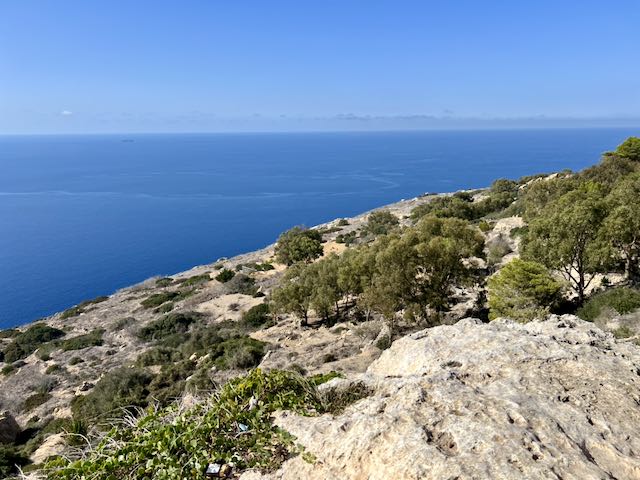
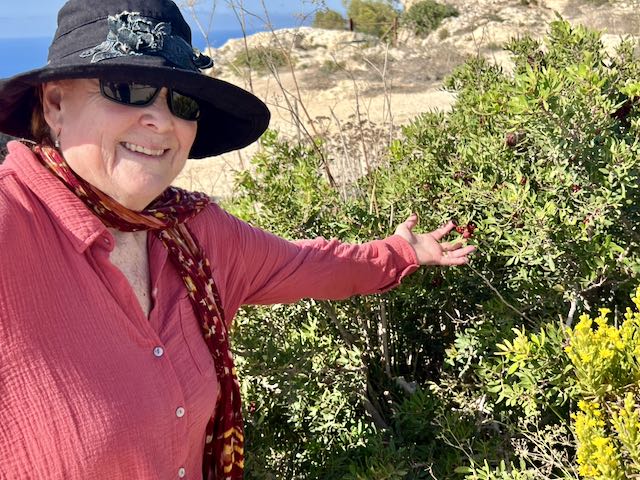
The cliffs propose a majestic sight; the views overlooking the terraced fields underneath and the panorama of the vast open seas. Given their impressive height the cliffs can be considered as natural forts, since no attacker can approach the island from the west.
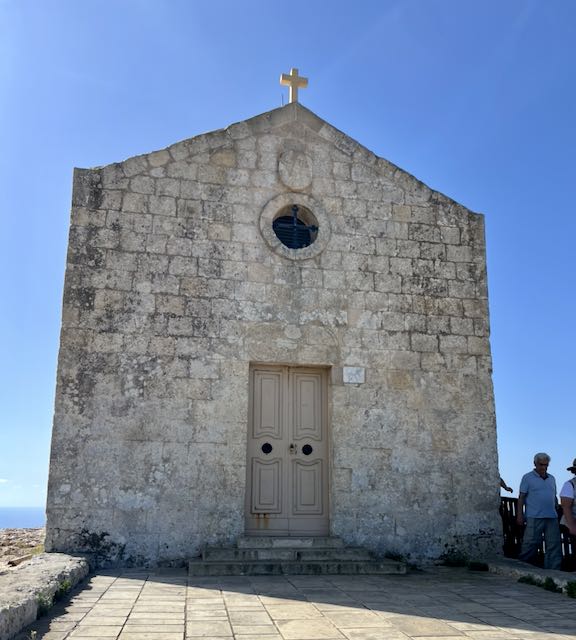
Located at this site was a small chapel dedicated to St Mary Magdalen – and dates from about 1575! Unfortunately the chapel wasn’t open for viewing.
Our next stop, prior to getting to Mdina was a visit to the San Anton Botanical Gardens, located in the village of Attard.
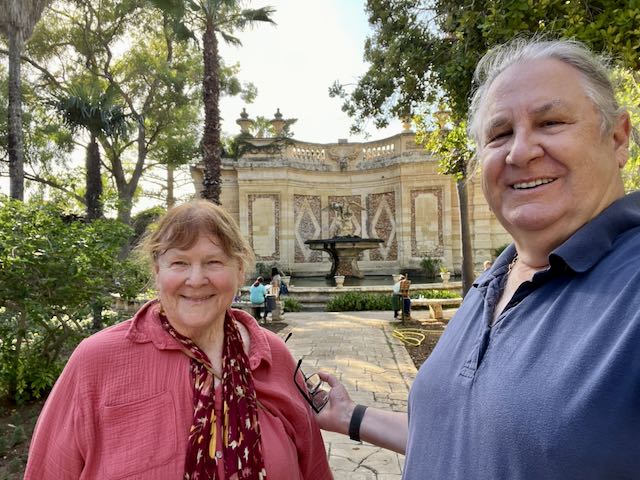
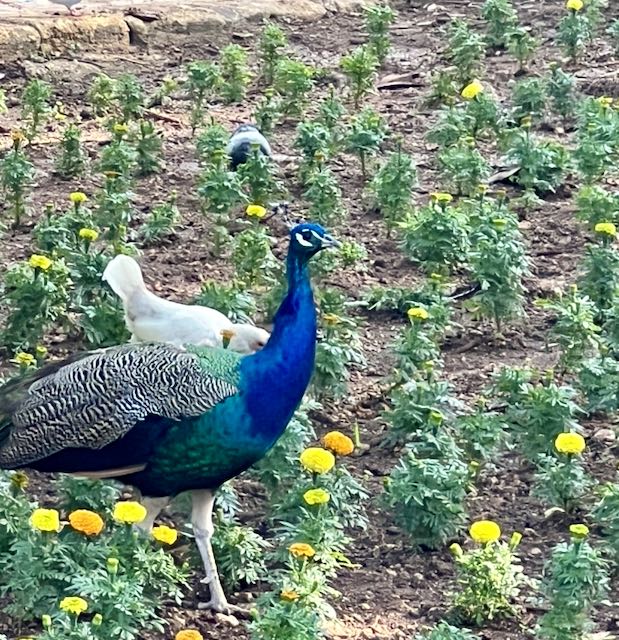
These beautiful gardens were built in the early 17th century by Grand Master Antoine de Paule to complement his summer residence; San Anton Palace, which is located at the perimeter of the gardens and which today serves as the residence of the Maltese President.
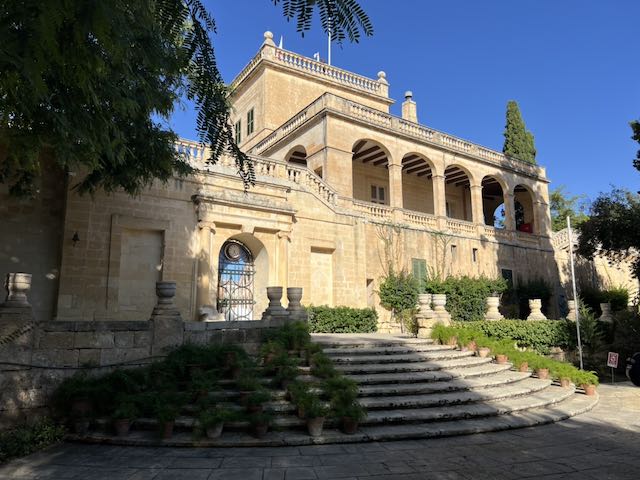
The gardens have several pathways surrounded by fountains and ponds which are inhabited by families of ducks, swans, peacocks, peahens and turtles and encompass a large variety of trees and flowers from around the world. Of course, due to the time of year, there wasn’t a lot of color around but it was a pleasant spot to stop and walk.
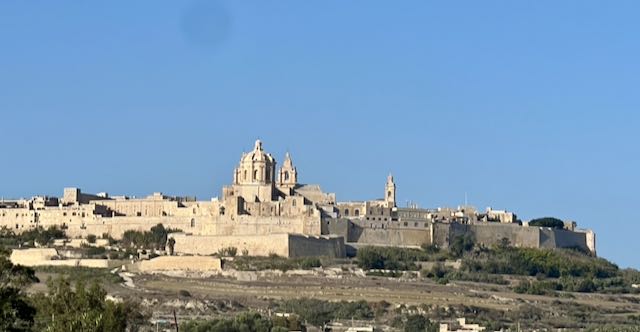
Mdina is a fortified city and served as the island’s former capital, from antiquity to the medieval period. The city is still confined within its walls, and has a population of 250, but it is contiguous with the town of Rabat, which takes its name from the Arabic word for suburb, and has a population of over 11,000 – and was originally a Roman City.
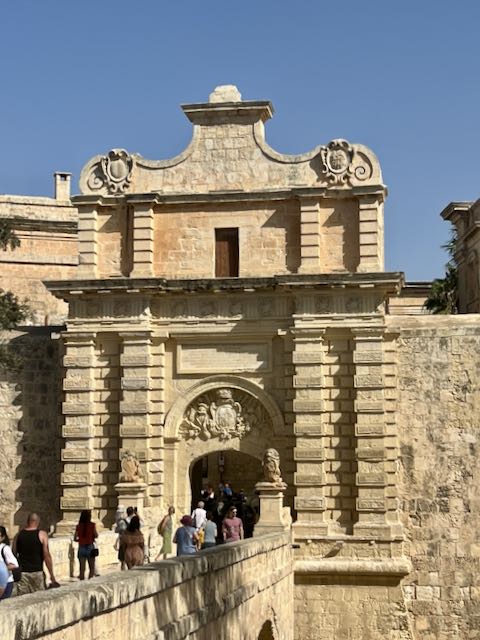
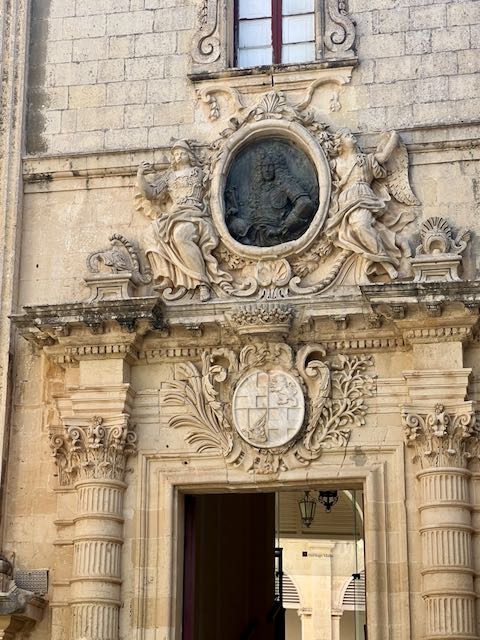
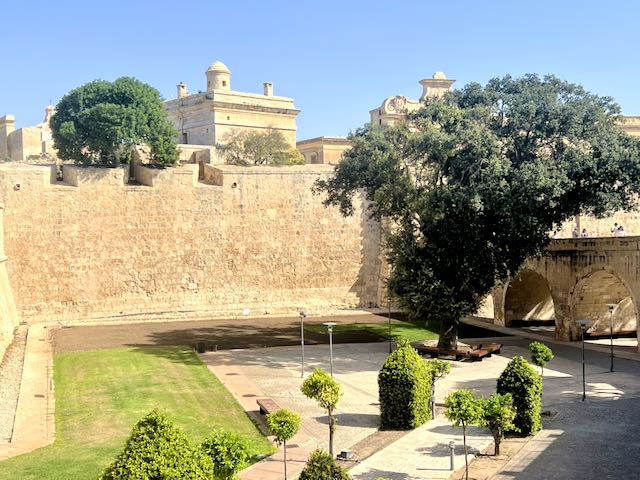
Mdina is located at the top of a hill and has been inhabited since prehistory. A Phoenician colony known as Ann was established around the 8th century BCE, sharing its name with the island and presumably acting as its capital. During the Punic Wars, the town was acquired by the Romans and renamed Melita after the Greek and Latin name for the island. Greco-Roman Melite was larger than present-day Mdina. It was reduced to its present size during the period of Byzantine or Arab rule. Following a 9th century massacre, the area was largely uninhabited until its re-establishment in the 11th century as Madīnah, from which the town’s current name derives. Mdina then continued to serve as the capital of Malta until the arrival of the Order of St. John in 1530. Mdina experienced a period of decline over the following centuries, although it saw a revival in the early 18th century during which several Baroque buildings were erected.
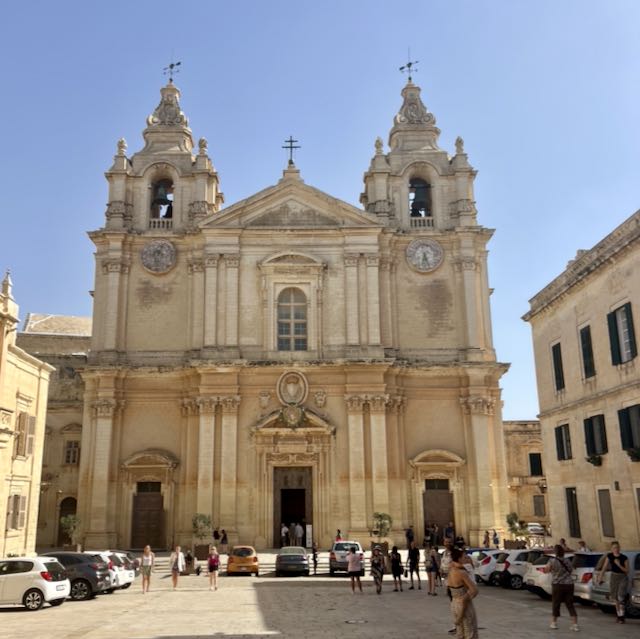
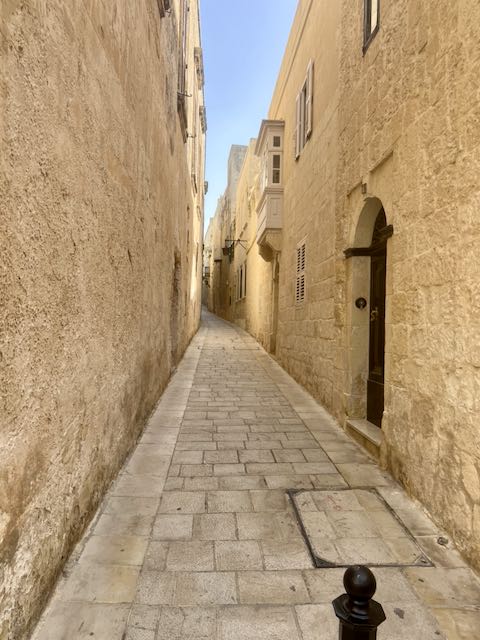
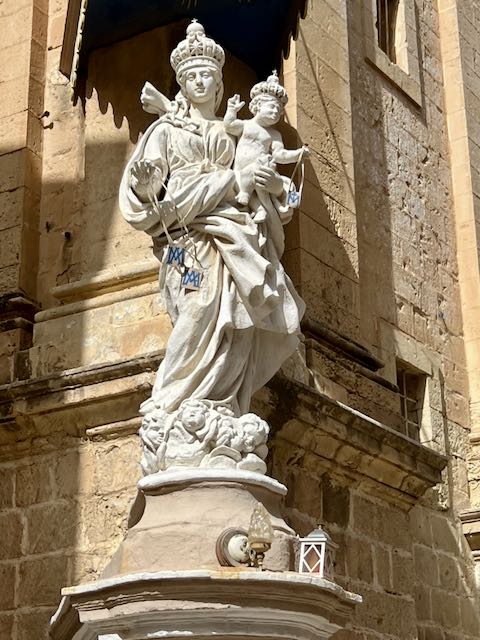
Largely maintaining its medieval character, Mdina remained the center of the Maltese nobility and religious authorities with property passed down between families and from generation to generation. It never regained its pre-1530 importance, however, once Valletta became so dominant. Due to the medieval character, it has been used for a number of TV and Movie sites including the Game of Thrones (which we have never watched).
Not surprising, there are local wines available around the Island. Janeen took a particular liking to a different kind of Spritz – Instead of an Aperol Spritz she discovered a Maltese Spritz. This is made from local cactus (prickly pear) liqueur.
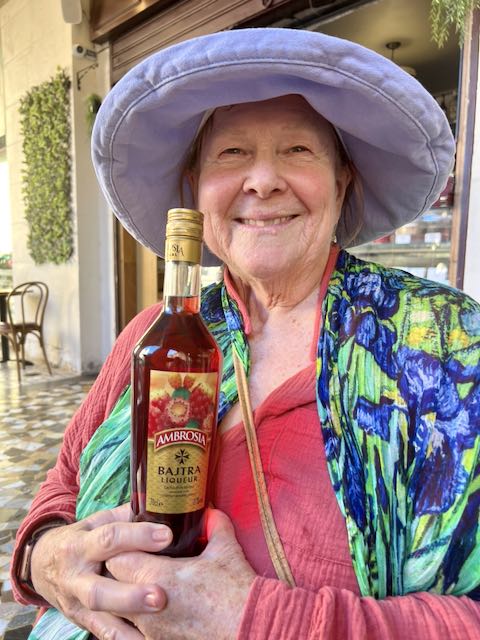
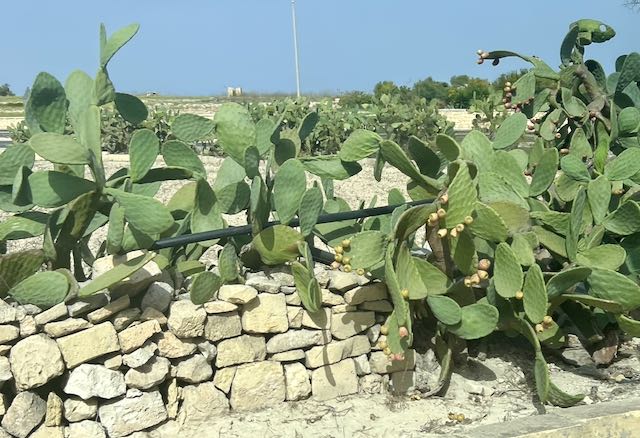
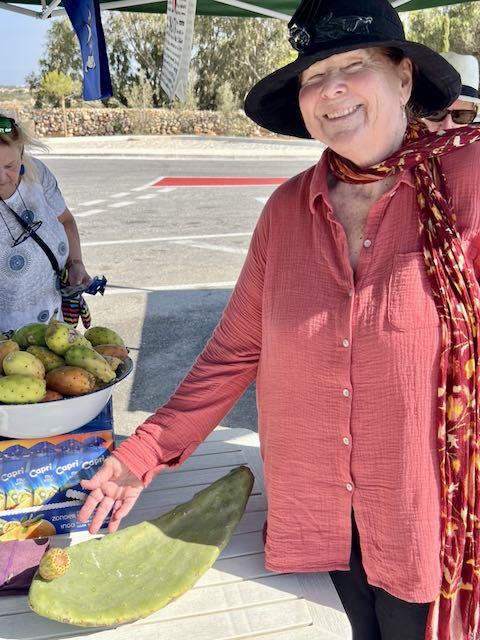
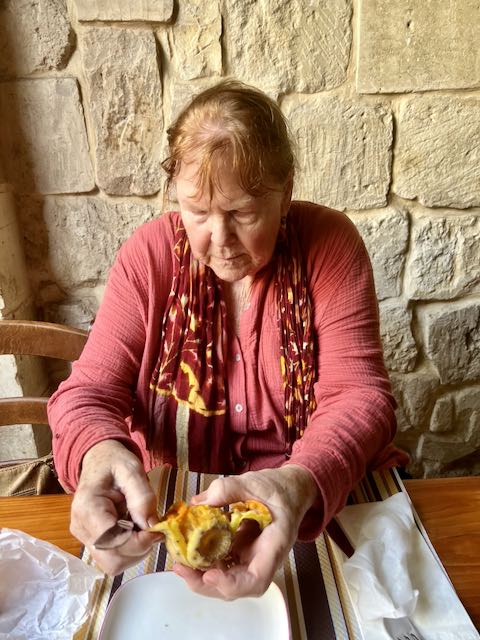
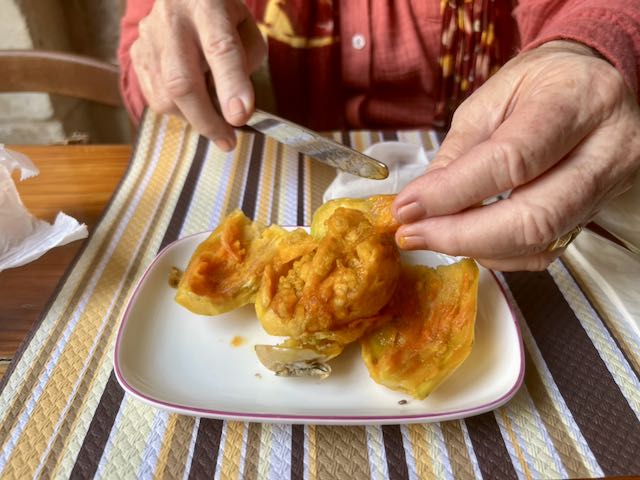
So, of course, I had to buy a bottle for later and following Rule #2 (Eat Local) she bought a prickly pear to eat. Unfortunately, the fruit was not as sweet as it will become as the harvest wouldn’t be for a couple more months
Quite a history lesson. I was supposed to see Malta on a cruise I had to cancel. I am glad I can read about what I missed. I love your blogs. I just returned from Denver and SC. Had a wonderful visit with Slader and I miss him. Love and hugs, Claudia
Impressive sights!